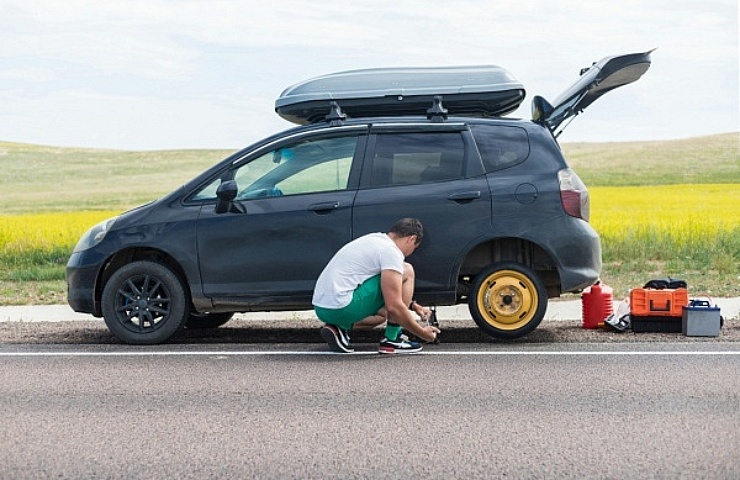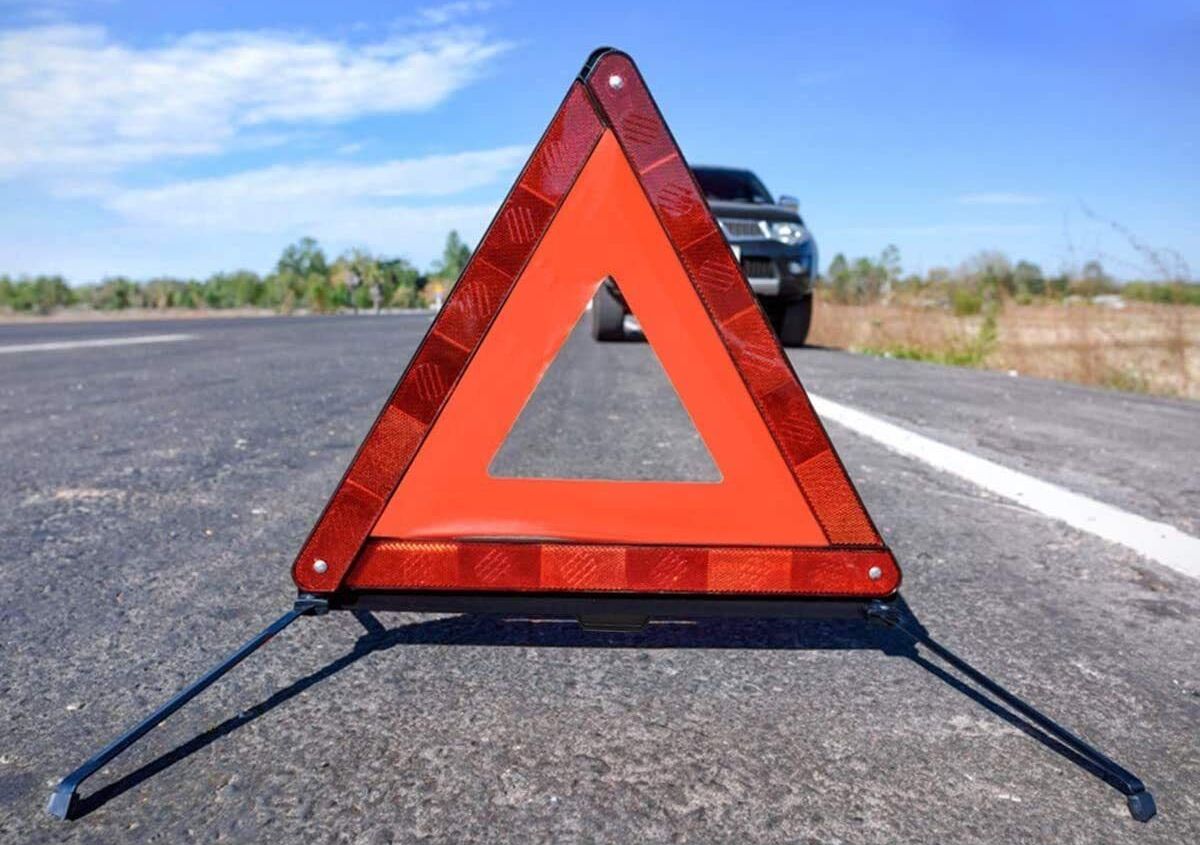Contents
Driving on a flat tire is dangerous and can damage your car. If you hear or feel a thumping or bumping from your vehicle, it might be due to a flat tire. Remain calm, activate the emergency flashers, and pull to the side of the road or, if possible, into a parking lot.
What Is a Spare Tire?
A spare tire is an extra tire a vehicle carries to replace a tire that has a blowout or goes flat. A spare tire is typically smaller in diameter than the tires currently on the car. It is designed to save space and not add weight to the vehicle. Some vehicles have a full-size spare tire that matches the car’s tires, but that’s true for only about 10 percent of cars and trucks on the road.
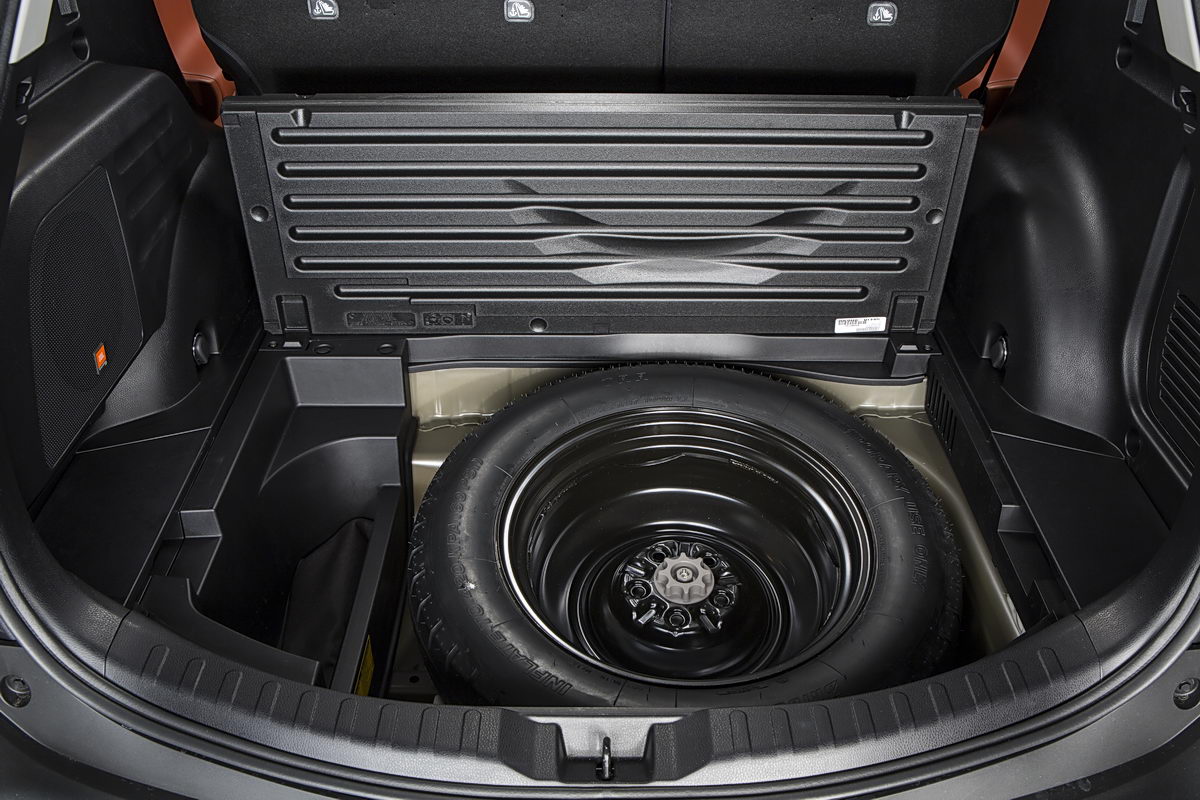
The spare tire in a 2013 Toyota RAV4 is located in an underfloor storage compartment, behind the rear seat.
Spare tires are almost always located in either the trunk or, in the case of an SUV, under the rear floor of the cargo area. Pickup trucks usually have their spare tire mounted outside the vehicle beneath the rear bumper.
About a third of new cars do not come with a spare tire. However, they might have a small portable compressor and tire sealant kit to fix a flat tire temporarily. In addition, some vehicles without a spare come with a run-flat tire, designed to operate for a limited distance after losing air from a typical puncture.
Stop what you’re doing and investigate what type of spare tire your car has (or if it doesn’t offer one). Don’t wait until you’re on the side of the road during a flat tire emergency to discover that you don’t have a spare.
How Far and Fast Can You Drive on a Temporary Spare Tire?
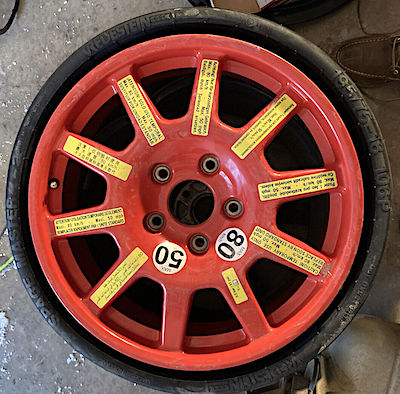
Porsche Cayenne space saver spare tire
The time you can drive on a spare tire depends on the tire.
- A tire that matches the existing tire for size and specs will provide the same level of use.
- A space-saver spare tire is narrow, compact, and typically suitable for only about 50 to 70 miles. It shouldn’t be driven at high speeds.
- If your vehicle is equipped with a run-flat tire, it can typically be driven between 50 and 100 miles at a maximum speed of 50 miles per hour. Check your vehicle’s owner’s manual or tire guide for distance and speed recommendations.
Finally, spare tires should be removed as soon as possible by replacing or repairing the original tire. The presence of any differences in tire traction can increase braking distances, especially during an emergency. Tire traction differences can also impact vehicle handling.
What You Need To Change a Tire
Before you have a flat tire, make sure you have the necessary tools to install the spare tire:
- The spare tire
- Work gloves
- Car jack
- Lug wrench
- Flashlight or another source of light
- Reflective warning triangles for changing the tire on the side of the road or in a parking lot
If you are unsure how to change a flat tire, don’t take any unnecessary chances. Driving on an improperly installed spare can be dangerous. If you struggle to change a flat tire, contact emergency roadside assistance.
If Your Car Doesn’t Have a Spare
First, check with the dealer where you bought the vehicle. The dealership could replace the missing tire if the car were supposed to have a spare. At a minimum, the dealer should inform you what type and size spare tire should come with the vehicle.
Another option is to buy a spare. But, again, you need to know the type and size of the tire required.
Shop now for spare tiresIf you have emergency roadside service, they will tow your vehicle to the nearest repair facility, which can repair or help replace the flat tire.
Final Important Thoughts
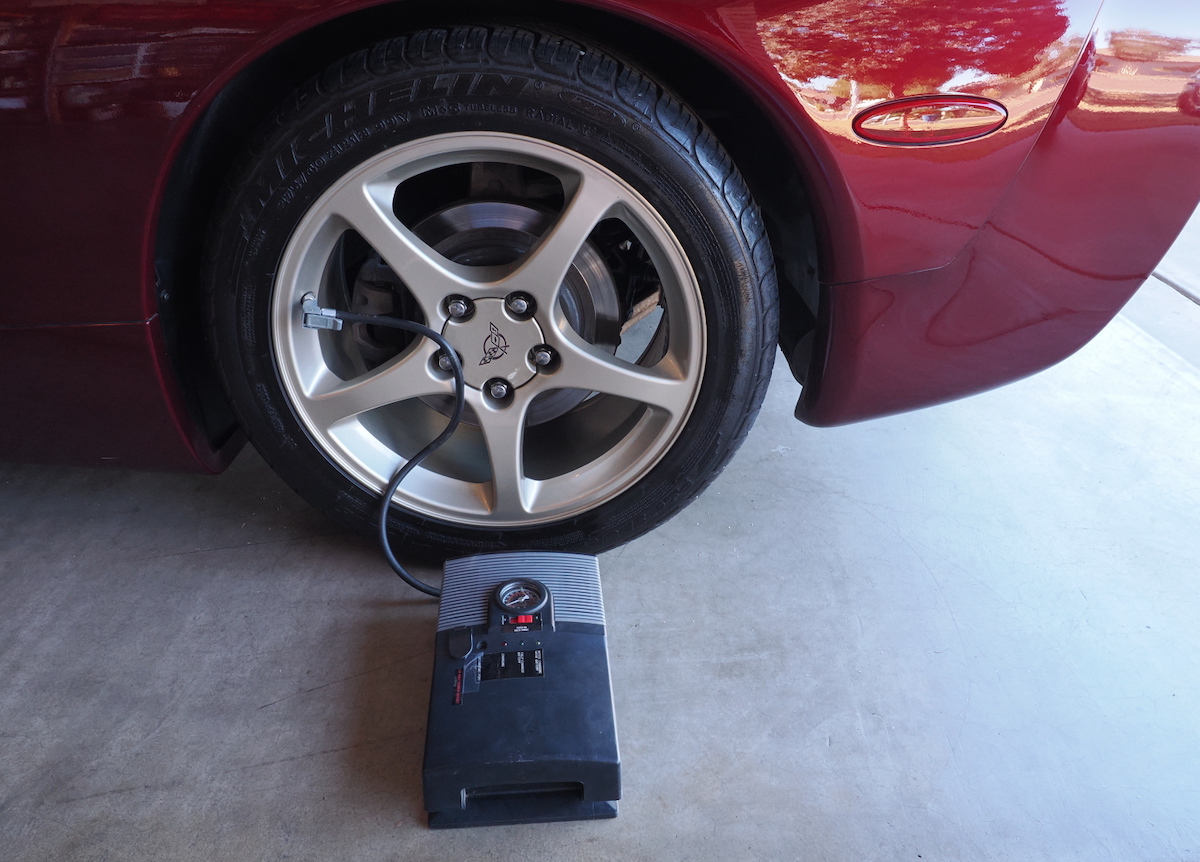
A small portable tire inflator comes in handy.
- Your spare tire needs regular attention to ensure it’s in good condition and adequately inflated.
Check the tire pressure on the spare every time you check the other tires on your vehicle. The owner’s manual or the driver’s side door jamb indicates the proper amount of air pressure. - Spare tires can be recalled. Recalls may be issued on all types of tires. Use the US Tire Manufacturers Association “Tire Recall Lookup” tool to track tire recalls online.
- Spare tires also need to be replaced. Even if the tire looks new and has never been used, it should be replaced approximately every eight years. Your car’s owner’s manual can specify how frequently you should replace your spare tire.
- Spare tires may activate your vehicle’s warning lights. When you place a spare tire on your car and start driving, it may trigger the brake and anti-lock braking system (ABS) warning lights on your vehicle’s instrument panel. This can occur if a spare tire rotates faster than the other tires on your car. In this scenario, don’t panic. Instead, continue to drive safely, and replace your spare tire with a long-lasting solution as soon as possible.

